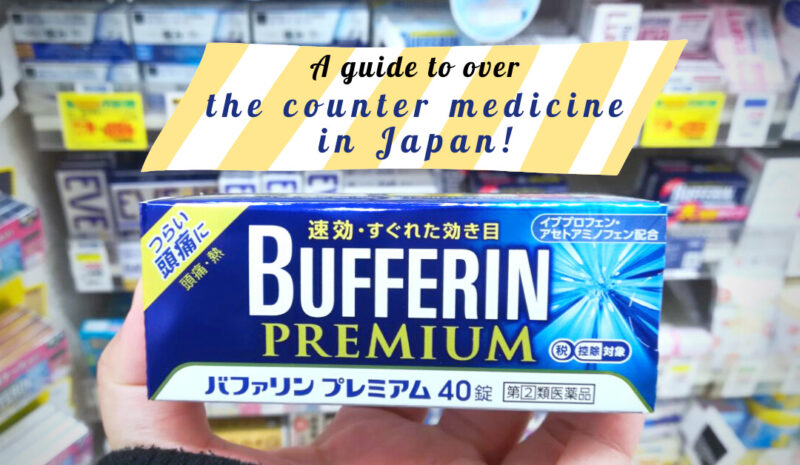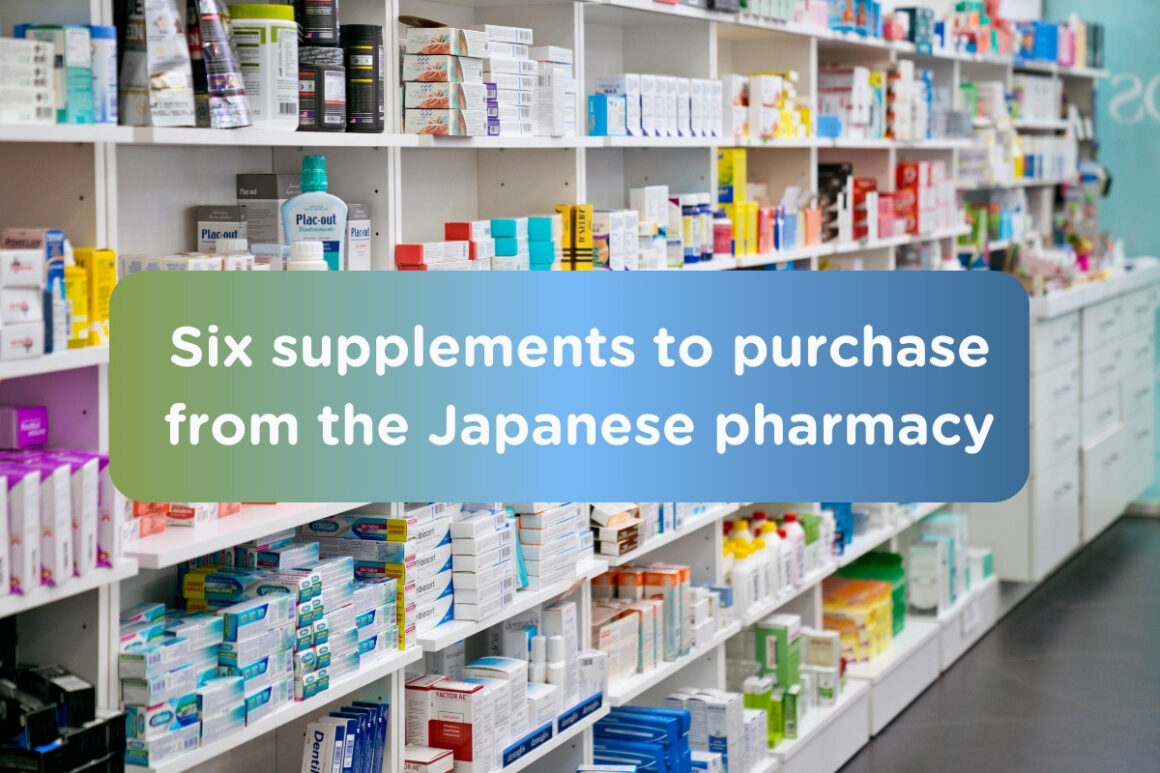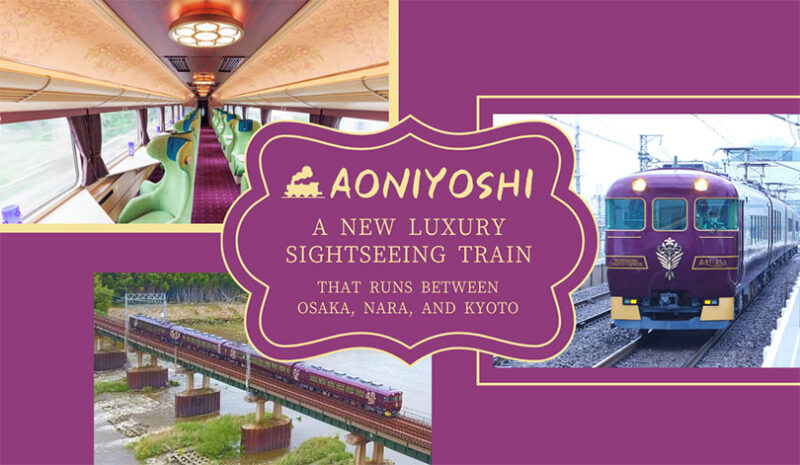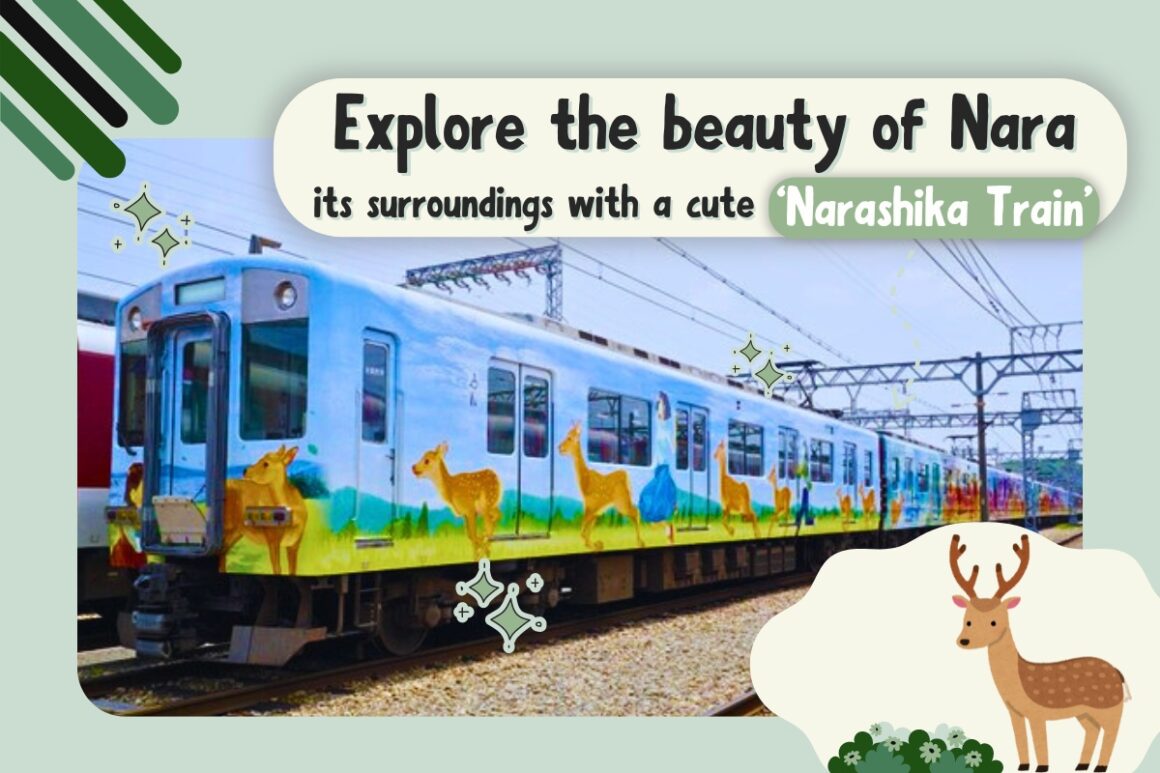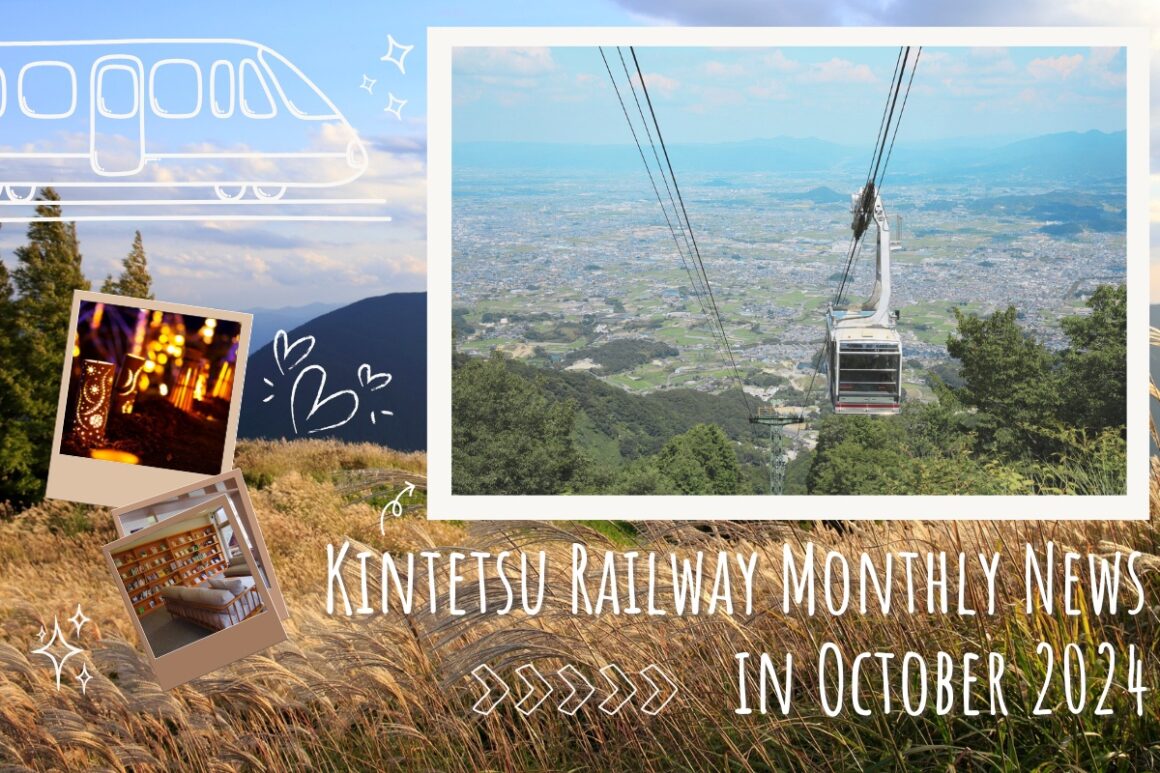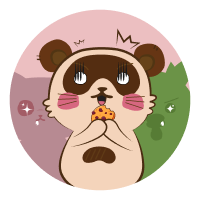10 amazing things to do in Oita, Japan!
Aug 27, 2020

Oita Prefecture is located at the northeast of Kyushu region, bordered by Fukuoka, Kumamoto, and Miyazaki prefectures. Known for its incredible hot spring sources, the prefecture is often called “Onsen Prefecture”, for having the two most visited onsen towns in Japan: Beppu and Yufuin.
Although the prefecture is best known for its onsen towns, it has a lot of things to offer for those looking for hidden gems. From a number of scenic towns and cities to other unique spots known for their Buddhist arts and historical architectures, the prefecture is brimming in culture and exciting places to visit!
Index
Recommended sightseeing spots in Oita:
- Beppu Hells Tour
- Beppu Beach Sand Bath
- Mt. Takasaki Monkey Park
- Yunotsubo Road
- Lake Kinrin
- Yufuin Floral Village
- Kuju Flower Park
- Usa Shrine
- Jion Falls
- Usuki Stone Buddhas
- Toriten
- Ryukyu
- Jigoku-mushi
- Tori meshi
- Bungo beef
How to get there
Oita is accessible by airplanes from major airports, including Haneda (95 minutes), Narita (115 minutes), Nagoya (70 minutes), and Itami (60 minutes).
You can also take the JR Limited Express from JR Hakata Station (Fukuoka) to visit the prefecture, or also take the highway bus operated by Nishitetsu from Fukuoka Airport International Terminal to Beppu Kitahama.
Recommended sightseeing spots in Oita
Although Oita is relatively far from Tokyo, this one prefecture of Kyushu Island is worth visiting for its adorable sightseeing spots, unspoiled countryside sceneries, and delicious local treats.
Here are our picks for the best things to do in Oita, Japan!
1. Go around the Hells of Beppu
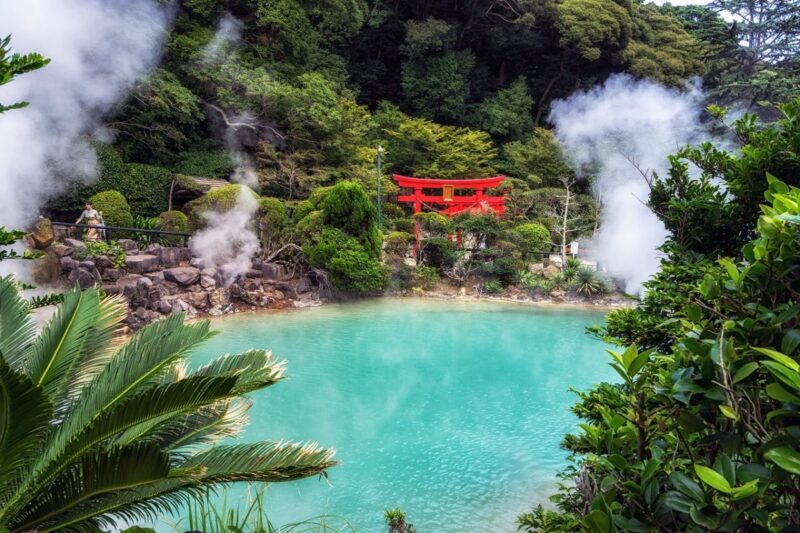
Beppu Hells Tour, or Jigoku Meguri (地獄めぐり), is perhaps one of the most popular attractions in Beppu. Attracting more than hundred thousands of visitors from all over Japan and from abroad, the hot springs included in Beppu Hells Tour are not the regular hot springs where you bathe yourself.
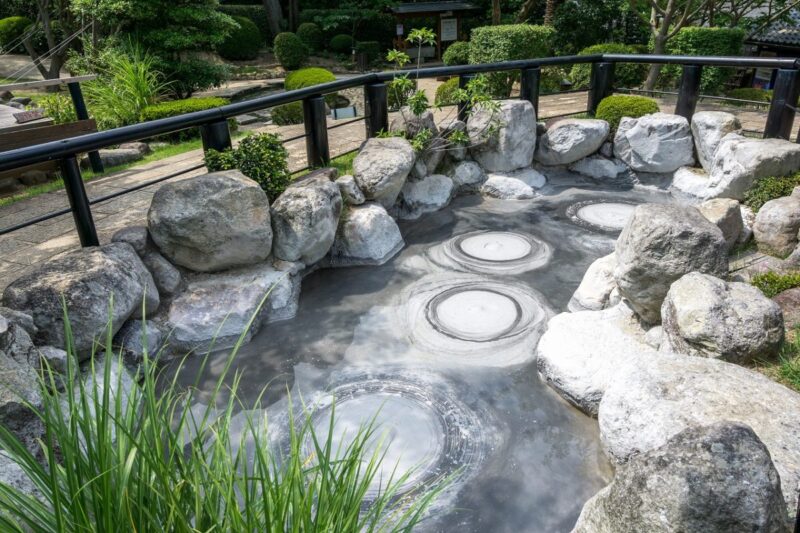
These hot springs are more for viewing rather than bathing, as their temperatures are much higher than the ordinary onsen. There are seven hells in total; five of them are located in the Kannawa district, and two of them are in the Shibaseki district.
Beppu Hells Tour
Business hours: 8:00 – 17:00
Open throughout the year
Ticket booklet (valid for 2 days): adults (age 15 and above) 2000 yen; children (age 6-14) 1000 yen
2. Relax yourself by bathing in a sand onsen at Beppu Beach Sand Bath
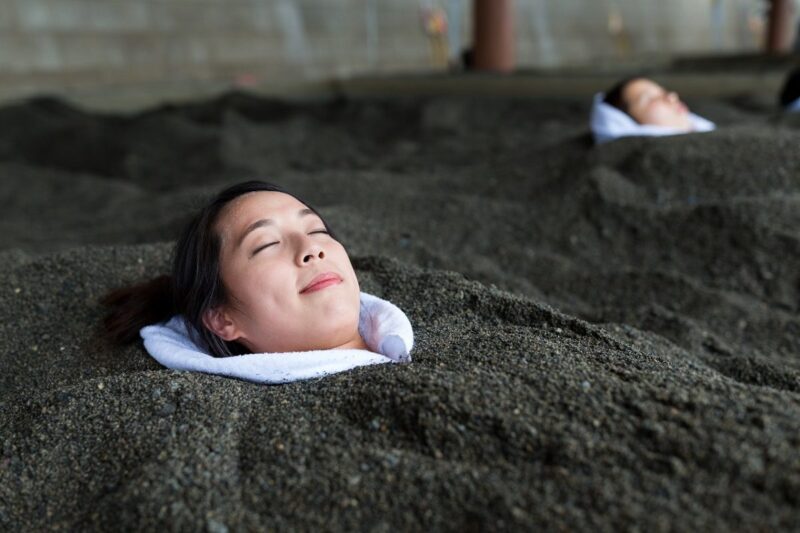
Beppu Beach Sand Bath is a sand onsen located along the coast of Beppu, where you bathe in hot sand instead of in hot water. Unlike hot springs, you bury your whole body in hot sand with just your face poking out, and you’ll sweat after 15 minutes bathing in the sand. Famous for its various health benefits, the Beppu Beach Sand Bath is believed to improve stiff muscles or joints, relieve chronic muscle or joint pains, stabilize high blood pressure, reduce stress, and improve poor blood circulation.
Beppu Beach Sand Bath
Business hours: March to November 8:30 – 18:00 (last entry is at 17:00); December to February 9:00 – 17:00 (last entry is at 16:00)
Closed on the fourth Wednesday of each month (if a public holiday falls on a Thursday, it will close on the next day)
Admissions: 1050 yen
Access: about a 15-minutes bus ride from JR Beppu Station
3. Say hi to the cute monkeys at Takasakiyama Monkey Park

Looking for something cute? How about visiting the Takasakiyama Monkey Park to see its adorable monkeys?
Opened in 1952, Takasakiyama Monkey Park is located at the food of Mt. Takasaki, and is apparently one of the world’s largest monkey parks as it occupies approximately 1500 wild Japanese macaques. These monkeys eat as they are fed, run around, play, or just sit in the sun while grooming each other.
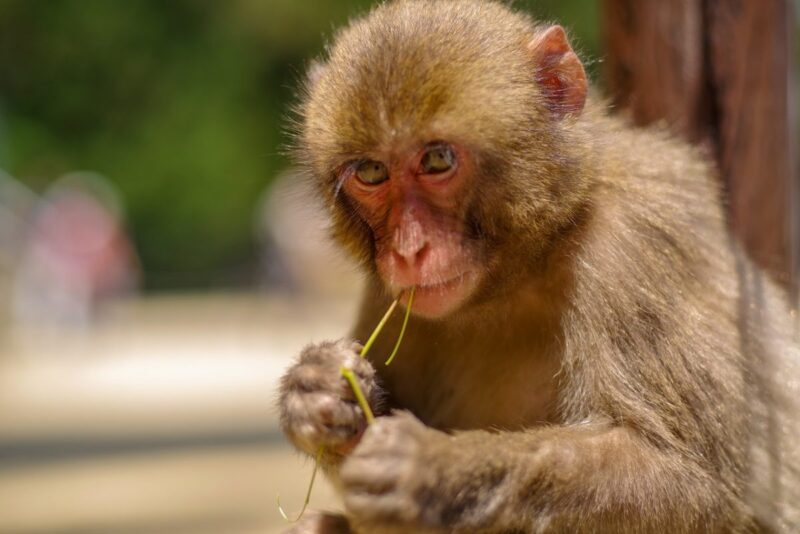
Although the monkeys look tame, you should never touch or feed these monkeys, and eye contact should be avoided as the monkeys might attack randomly.
Takasakiyama Monkey Park
Business hours: 9:00 – 17:00 (last entry is at 16:30)
Open throughout the year
Admissions: adults (age 15 and above) 520 yen; children (age 6 -14) 260 yen; free admission for age 6 and under
4. Explore Yunotsubo Street’s local stores
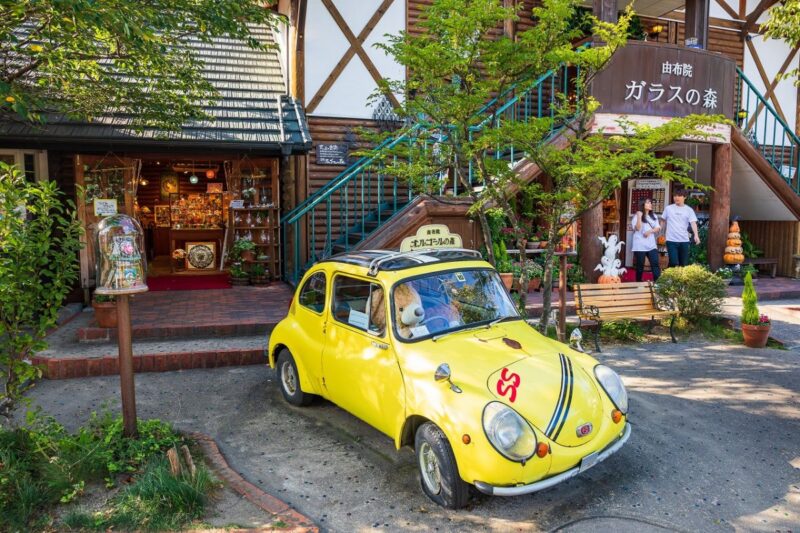
Suchart Boonyavech / Shutterstock.com
Yunotsubo Street connects JR Yufuin Station and Lake Kinrin, and it’s located at the foot of Mt. Yufu-dake. Lined with souvenir stores selling Oita’s local specialties, and eateries offering Oita’s local treats, this street is always packed with tourists visiting from other prefectures and other countries.
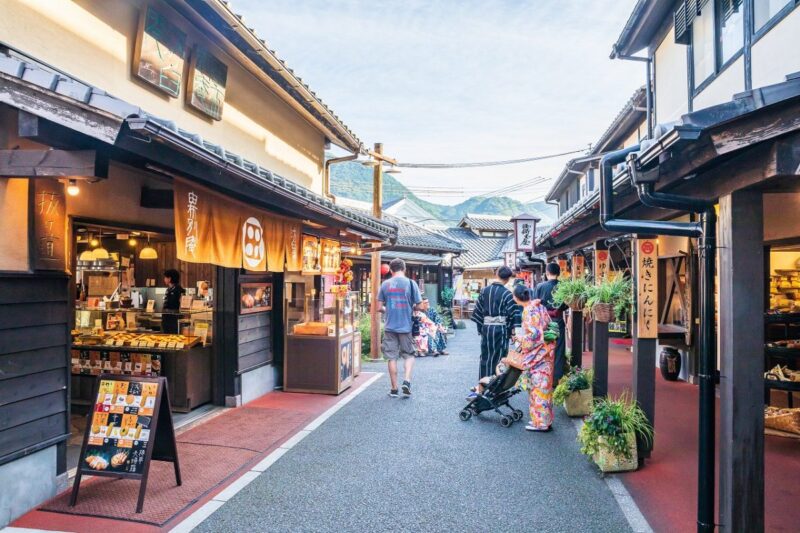
Suchart Boonyavech / Shutterstock.com
One of the most interesting spots to visit is the Yunotsubo Alley, a small alley filled with stores offering seasonal desserts and snacks, local craftwork, and accessories.
Yunotsubo Street
Business hour varies by each store, but most close early (17:00 or 18:00)
Open throughout the year
5. Lake Kinrin: Yufuin’s best magical scenery
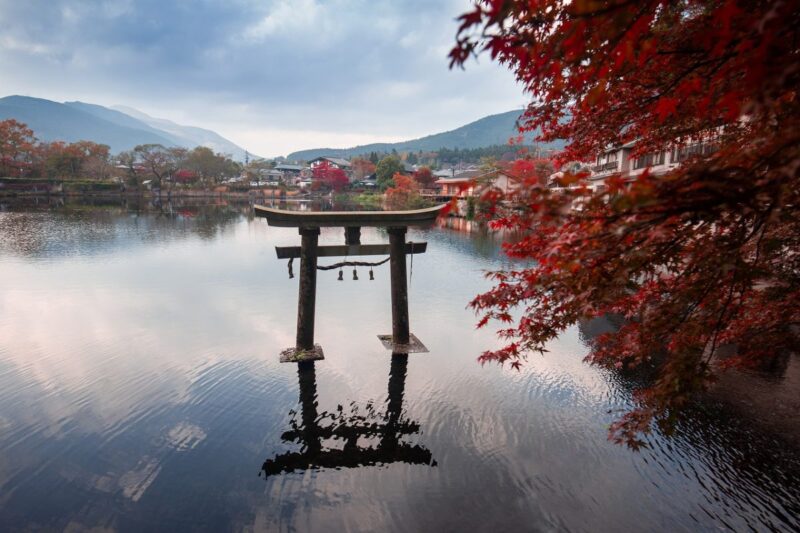
Lake Kinrin is located in Yufuin, an onsen city of Oita, and is famous for its mystical morning mists, which are created when water welling up from hot and cold springs mix during cold seasons.
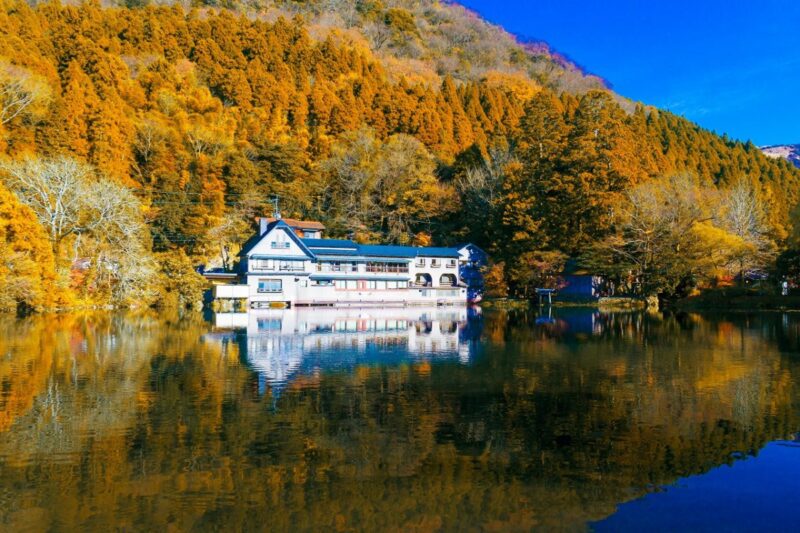
Located just a 25-minute walk from JR Yufuin Station, there are many onsen, restaurants, and cafes to explore on the lake’s shores. When you visit Lake Kinrin, don’t miss the art museums along the main road between Yufuin and the lake, and also the small shrine at the lake’s southern end!
Lake Kinrin
Access: about a 25-minute walk from JR Yufuin Station
6. Yufuin Floral Village: a lovely fairytale world in Yufuin

Suchart Boonyavech / Shutterstock.com
Need a break from reality? How about visiting Yufuin Floral Village to enjoy its fairytale-like vibes?
Inspired by the Cotswold region of England, where the famous movie “Harry Potter” was made, Yufuin Floral Village offers a lot of fun experiences to enjoy.
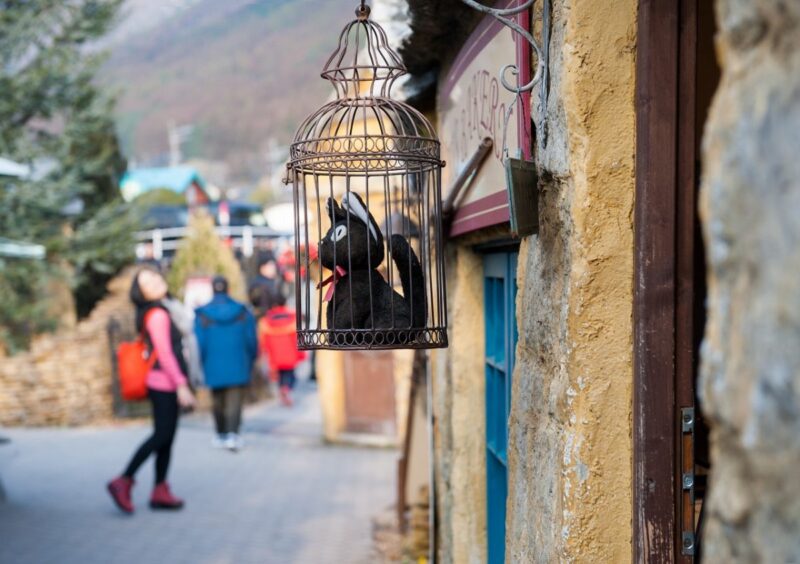
The theme park is lined with many cute and petite stores, where you can pet animals like cats and owls, or shop for cute souvenirs and gifts. Some of the most popular stores are “Kiki’s Bakery”, which is modeled after Ghibli’s “Kiki’s Delivery Service”, and “The Rabbit”, a shop selling Peter Rabbit goods. Yufuin Floral Village offers a truly lovely sight, and you’ll definitely enjoy strolling around this English garden-style wonderland!
Yufuin Floral Village
Business hours: 9:00 – 18:00 (last entry is at 17:30)
Open throughout the year
Access: about a 5-minute taxi ride or a 15-minute walk from JR Yufuin Station
7. Stunning seasonal displays of flowers at Kuju Flower Park
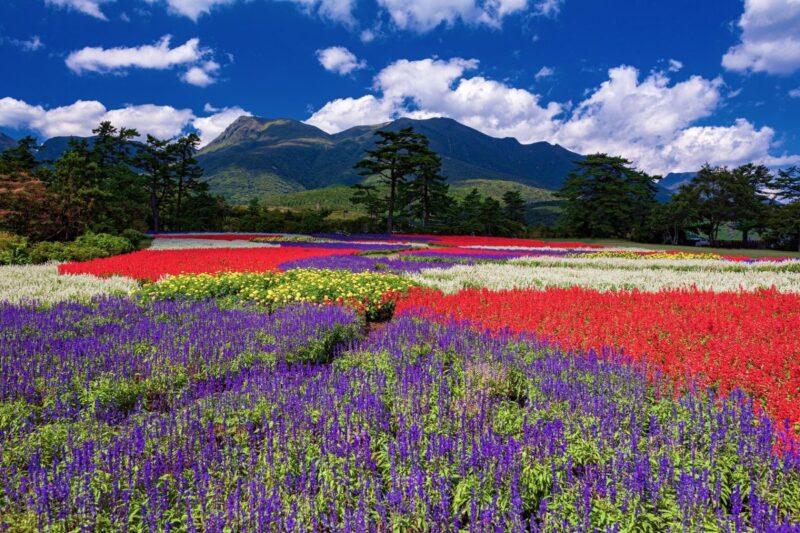
Located about 15 kilometers east of Kurokawa Onsen, Kuju Flower Park is a marvelous and attractive park that has about 3 million plants of more than 500 different varieties.

The park is very spacious; it covers 49 acres of land with various flower species, including lavender, salvia, blueberries, pink moss, tulips, sunflowers, and poppies. On sunny days, you can enjoy lovely views of colorful flowers with the Kuju Mountain Range in the backdrop.
Kuju Flower Park
Business hours: March to November 8:30 – 17:30 (last entry at 17:00)
Closed during winter (December to February)
Admissions: adults (age 15 and above) 1300 yen; children (age 5 -14) 500 yen
Access: about a 60-minute drive from Oita City
8. Visit the great Usa Shrine and pray for a good luck
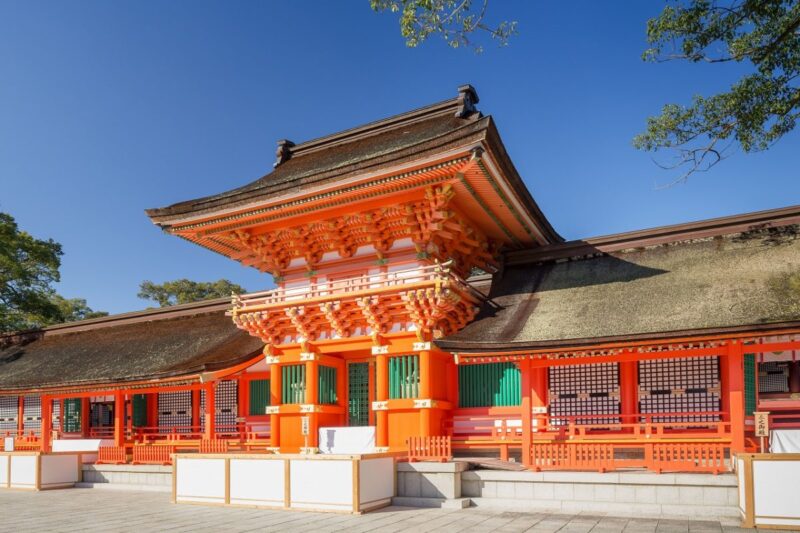
Usa Shrine is located at the foot of the Kunisaki Peninsula and was built in the 8th Century. Known as the head shrine of thousands of Hachiman shrines across Japan, the shrine had a big influence on the Kunisaki Peninsula’s culture.
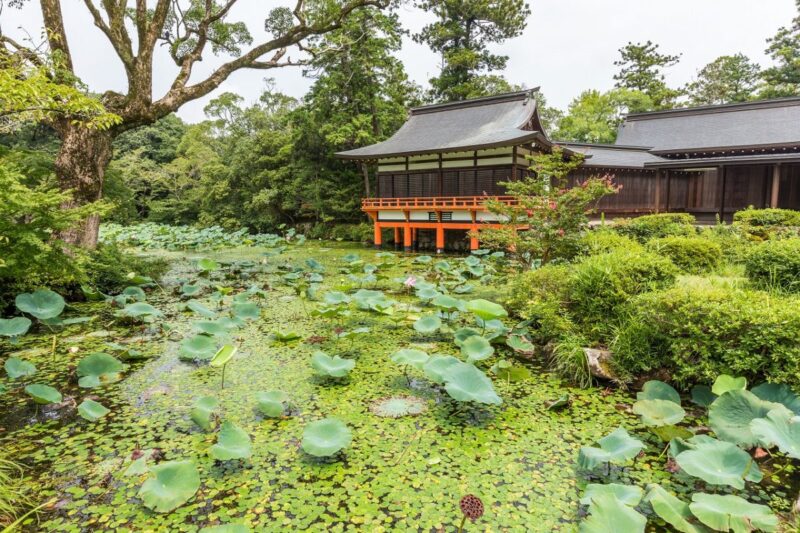
The shrine holds a large compound that includes an upper shrine complex, a lower shrine complex, a treasure hall, a couple of ponds, and several secondary shrine buildings.
The upper shrine complex is located at the top of a hill and has three main halls dedicated to Hachiman (the God of archery and war), to his mother (Empress Jingu), and to his wife (Hime Okami). The lower shrine complex at the foot of the hill also features three main halls dedicated to the same deities.
Usa Shrine
Business hours: April to September 5:30 – 19:00; October to March 6:00 – 19:00
Access: about a 10-minute bus ride or a 10-minute taxi ride from JR Usa Station
9. Find your peace at Jion Falls

Looking for a peaceful hidden spot? Head to Yamaura area of Kusu-machi to see Jion Falls; a 30-meter high two-tiered waterfall that is famous for its breathtaking view and clear water.
Unlike other waterfalls, Jion Falls has a walking track around it, so the waterfall is easily accessible and also wheelchair friendly.
Jion Falls
10. See the gorgeous Usuki Stone Buddhas
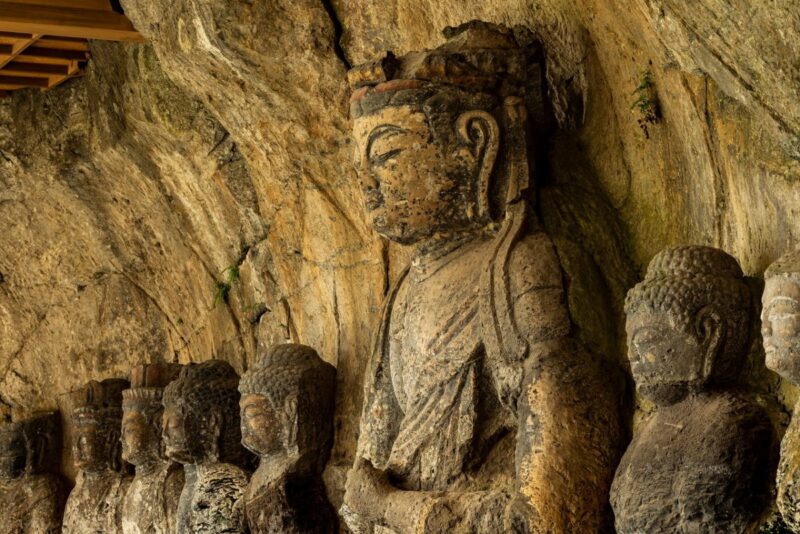
The Usuki Stone Buddhas are located about 5km southwest of Usuki’s city center, and they are the only stone Buddhas in Japan to be designated as national treasures. Unlike most Buddha statues in Japan, which are usually made of wood or metal, Usuki Stone Buddhas are statues of various Buddhas sculpted into a cliff.
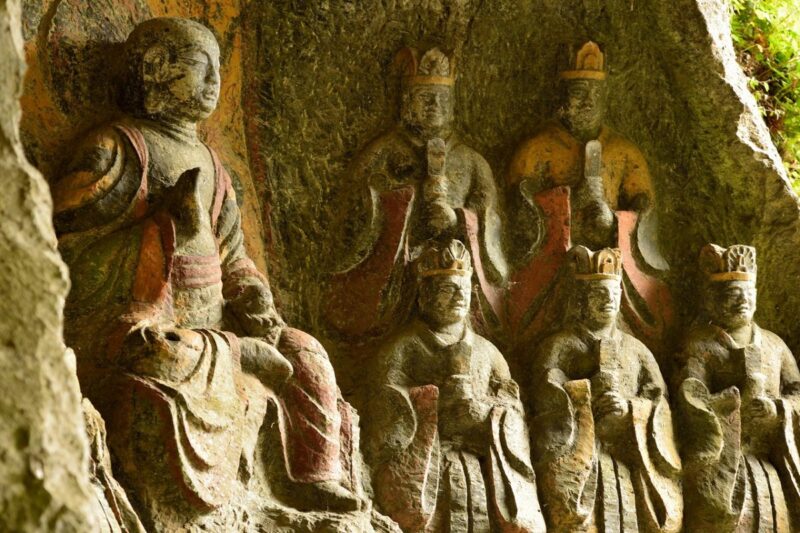
These beautiful and marvelous stone Buddhas were built around the late Heian Period (794 – 1185), using the workable and soft volcanic rock from the nearby Mt. Aso.
Usuki Stone Buddhas
Business hours: April to September 6:00 – 19:00; October to March 6:00 – 18:00
Admissions: adults (age 15 & above) 550 yen; children (age 6 – 14) 270 yen
Access: about a-15 minute taxi ride or a 20-minute bus ride from JR Usuki Station
Public transporation guide (PDF)
Oita’s best local treats
Located in the Kyushu region, Oita is blessed with locally grown fish, meat, and vegetables. From the famous Toriten to the underrated Bungo beef, wherever you go, scrumptious local treats await in Oita. Here are our picks for the best food to try when visiting Oita!
1. Toriten
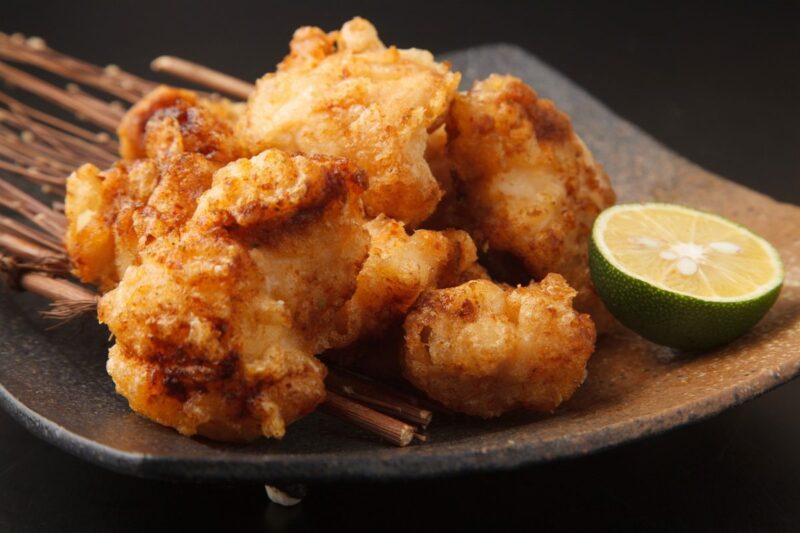
Toriten is a chicken tempura and perhaps the most famous local treat of Oita Prefecture. Made by deep-frying large chunks of chicken battered in tempura coating, Toriten is famous for its crunchy texture and juicy flavor. Widely available through the prefecture, make sure to try these yummy treats when visiting Oita!
2. Ryukyu
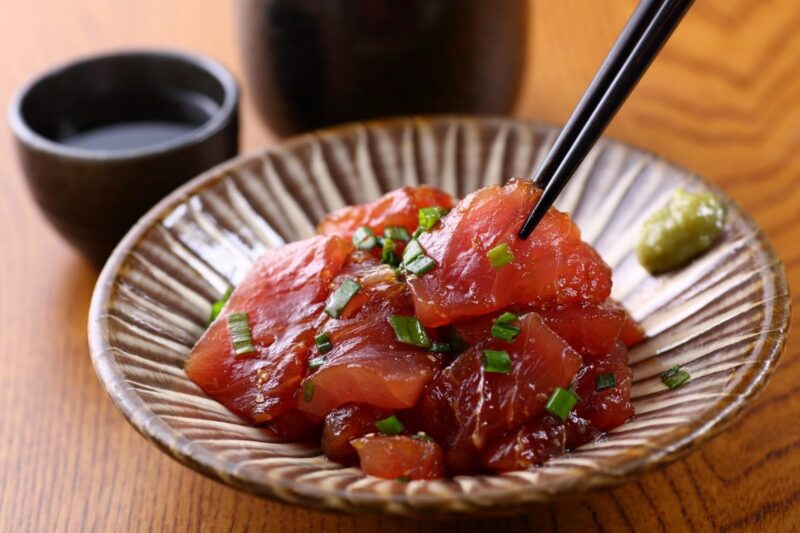
Ryukyu is one of the most famous local specialties of Oita, and it’s usually served as a side dish or on a bed of rice. Made by marinating sliced fresh fish meat with soy sauce, sake (rice wine), and sesame, fish like yellowtail, mackerel, and horse mackerel are usually used to make Ryukyu.
3. Jigoku-mushi
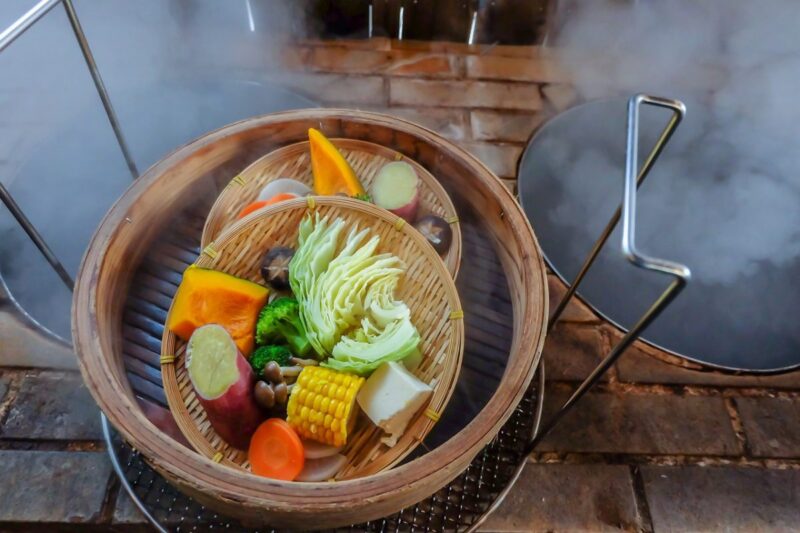
Jigoku-mushi (地獄蒸し, hell steaming) is a traditional cooking method used in Kannawa neighborhood in Beppu to cook the food. Cooked using only the steam produced from the hot spring, jigoku-mushi is also known as one of the healthiest cooking methods in Japan as no oil is used during the process.
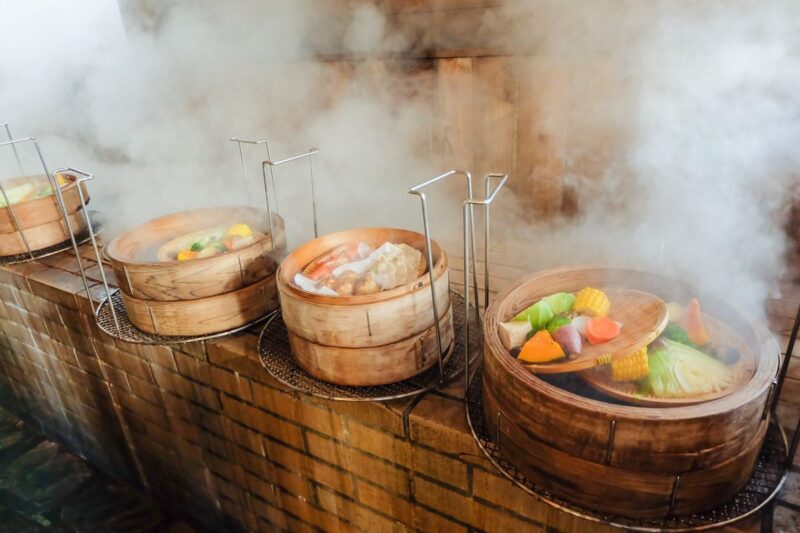
Seasonal vegetables and locally caught seafood are steamed in special steaming baskets made of bamboo to prevent the flavor from escaping. Since the mineral-laden steam brings out the true flavors of the food, the ingredients of jigoku-mushi usually use light seasonings, or sometimes no seasonings at all.
4. Tori meshi
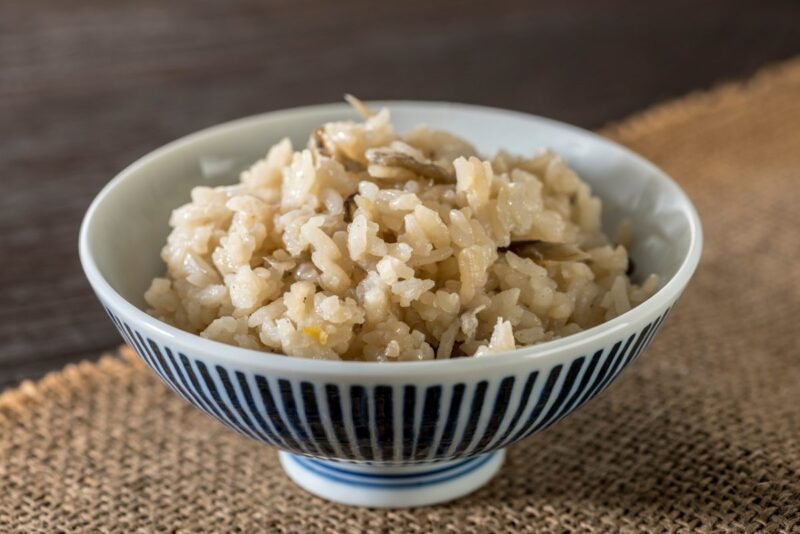
Have you ever heard of tori meshi before? Tori meshi is one the most popular local specialties of Oita Prefecture and perhaps one of the most famous comfort foods in the prefecture. Literally means “chicken rice”, tori meshi is a rice cooked together with chicken and burdock, then seasoned with soy sauce, cooking sake (rice wine), and sugar.
5. Bungo beef

Japan is famous for its melting and juicy wagyu (Japanese beef), and Bungo beef (豊後牛, Bungogyu) is a high-end kuroge wagyu (Japanese black cattle) brand originating from Oita Prefecture.
Known for its rich taste and high unsaturated fat content, Bungo beef is usually served in the form of a steak, shabu shabu (Japanese hotpot), or yakiniku (Japanese barbecue). One of the best places to try Bungo beef is in Beppu, a popular hot spring town in Oita Prefecture.
Now that you have an idea of how many incredible destinations are in Oita, all you have to do is plan your itinerary to enjoy unforgettable experiences in Oita!
